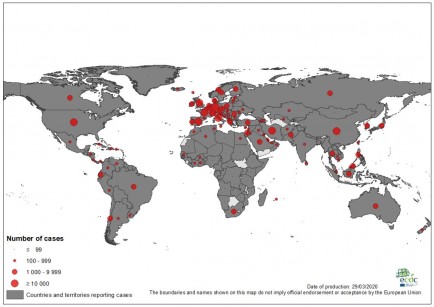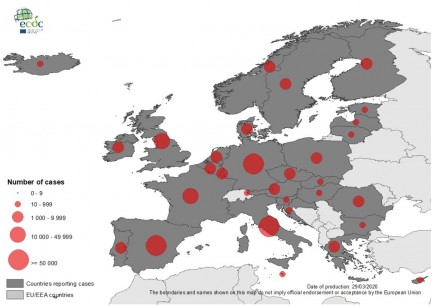As vaping-related lung illnesses continue to climb in the U.S., public health officials are narrowing in on two possible links: vitamin E and black-market vape cartridges. In New York, where 34 cases of the severe lung disease have been reported Department of Health officials said they are focusing on vitamin E acetate after finding it in nearly all of the samples it analyzed linked to the illnesses.
Although its safe to take as a vitamin or use on your skin, “the Department continues to investigate its health effects when inhaled because its oil-like properties could be associated with the observed symptoms,” it said in a statement.
Health officials also said the majority of vape cartridges involved came from black market sources. “Many are suspected to be counterfeits of recreational cannabis-containing vape products available in other states,” the statement said.
Public health officials are frantically trying to find the causes and sources of the rash of severe lung injuries. More than 200 cases of vaping-related illnesses have been reported from at least 25 states, including two reported deaths. One California doctor also said he is seeing black-market vape cartridges as a common connection to many of the patients he has treated. Many of them also had been vaping THC, CBD, or some combination, says Milton Teske, MD, a public health officer for Kings County and an emergency room doctor at Adventist Health in Hanford, CA.
He and his team interviewed most of the nine patients with severe lung injuries related to vaping that have come to the Hanford hospital so far. It is about 30 miles south of Fresno. “The one thing in common is that every single one had obtained [the vape] from a pop-up shop, or a stranger, or a friend of a friend,” Teske says. “No one had obtained it from a licensed dispensary.”
Pop-up shops open for an unfixed amount of time, advertise by word of mouth, and change locations often, says Nancy Gerking, assistant director of public health for the Kings County Department of Public Health. They follow no current regulations or safety practices, such as testing products for contaminants. “All of them [also] had in common they had been vaping THC or CBD or some combination,” Teske says. Both compounds are found in marijuana.
While the CDC has yet to pinpoint a common cause or substance, the agency says users report using THC or a similar substance in many of the cases. E-cigarettes usually contain nicotine, most also contain flavorings and other chemicals, and some may contain marijuana or other substances. Other commonly used names are vapes, e-hookahs, vape pens, mods, tanks, or electronic nicotine delivery systems (ENDS).
About 1 in 5 high school students now vape, the CDC estimates, and 1 in 20 middle school students do. Cost is the main driver for young people choosing to buy from an unlicensed source, Teske says. Buying cartridges from a licensed dispensary is usually about double the cost of getting them from an unlicensed source. He says sellers of the unlicensed goods may be cutting the THC or CBD with something that is toxic to the lungs. “There are all kinds of solvents they can use,” he says. And he doesn’t think it’s a criminal contamination, but rather the work of people who don’t know what they’re doing.
Teske gives credit to his colleague, Vishnu Bezwada, MD, a pulmonologist and critical care doctor at Adventist Health, Hanford, who told Teske he noticed a higher than normal number of patients coming in with acute respiratory distress syndrome.
“Typically in summer, you don’t see young people coming in with lung injuries,” Bezwada says. While Hanford-area doctors typically see a few patients with lung issues related to agriculture at this time of year, Bezwada says, these cases were different. When Teske interviewed the patients, he says, some told him they had a bad vaping episode in May, when cases began to surface. “Many said they have been vaping regularly for 1 or 2 years,” he says. The cartridges involved in the Kings County cases have been sent to the state for testing, Teske says.
California has seen 49 potential cases of lung disease among those with a recent history of vaping since late June. Most patients say they bought vaping materials from street vendors or pop-up shops, according to the California Department of Public Health. The investigation is ongoing.
National Case, Death Update
The latest death, in Oregon, involved a person who reported using a device containing cannabis bought from a licensed cannabis dispensary.
Typically, patients report cough, shortness of breath, or chest pain. Some have reported nausea, vomiting, diarrhea, fatigue, fever, and weight loss. The symptoms may develop over days or may take weeks. In two states, recent inhalation of THC or CBD have been reported by many, the CDC says, although nationally, no single substance or e-cigarette product has been consistently linked with the illness.
Other state officials report finding THC involved in many of their cases. According to Melaney Arnold, a spokeswoman for the Illinois Department of Public Health, 27 cases have been reported there as of Aug. 29. “Patients in Illinois have reported about a dozen different products and devices,” she says. “The majority of patients have reported using THC products, but a large fraction also report nicotine-based products. This makes it difficult to decipher which products or substances are contributing to illness.”
In Wisconsin, 32 cases have been reported as of Aug. 29. Public health officials there say that 89% of the 27 patients interviewed so far reported using e-cigarettes or other vaping devices to inhale THC products, such as waxes and oils. A wide variety of brand names and flavorings were reported. The vaping cartridges with THC may include chemicals or additives that are unsafe, unknown, and unregulated, they say. “The investigation is ongoing, and we are still working to gather information about the products used and where they came from,” says Elizabeth Goodsitt, a spokeswoman for the Wisconsin Department of Health Services.
What Changed?
Investigators are also trying to figure out what may have changed in vape cartridges that could have triggered this rash of respiratory illnesses. According to David Downs, writing in the publication Leafly.com, a marijuana information source, underground sellers began using a new tasteless and odorless thickening agent in late 2018. Buyers often judge THC potency by its thickness.
“This new additive may or may not play a role in the current health crisis,” writes Downs, Leafly’s California bureau chief. “But it is one of the major new ingredients in illegal vape cart oil in widespread use this summer.”
State regulators identified heavy metals in vape cartridges in the California market earlier this year, says Paul Armentano, deputy director of the National Organization for the Reform of Marijuana Laws (NORML). But since the California Bureau of Cannabis Control just started testing for heavy metals in December of last year, it’s impossible to know if these products were always like this or if this is a relatively new phenomenon, he says.
What’s the Treatment, Prognosis for Patients Who Vaped?
Typically, patients report cough, shortness of breath, or chest pain. Some have reported nausea, vomiting, diarrhea, fatigue, fever, and weight loss.
Acute respiratory distress syndrome (ARDS) typically develops hours or days after an injury to the lungs and may also happen because of pneumonia, near drowning, or other causes. It is diagnosed based on symptoms, such as severe shortness of breath; vital signs such as body temperature; and taking your pulse rate and a chest X-ray, the American Lung Association says.
If ARDS is present, fluid will show up in the lungs, there will be shortness of breath, and blood oxygen levels will drop. Patients get oxygen therapy and may need a ventilator, a machine that delivers oxygen through a tube inserted into the windpipe.
According to the CDC, steroids have helped patients who have the severe lung disease associated with e-cigarette use. A course of steroids did help many of the Kings County patients, Teske says. Patients were hospitalized for a week to nearly a month, Bezwada says, and treatment continued at home after their discharge.
“At this point, they have responded to steroids,” Teske says. As for the long-term outlook for the patients who vaped, he says, it’s just not possible to say. “The bottom line is, we don’t know. This is all so new.”
Original article: https://www.webmd.com/mental-health/addiction/news/20190905/are-vaping-ailments-linked-to-bootleg-cartridges



























Comments